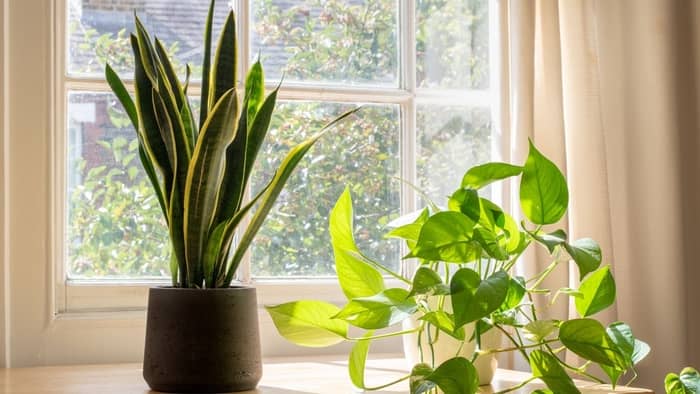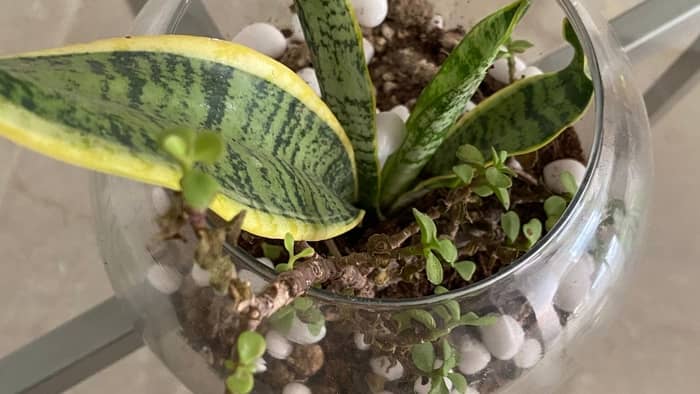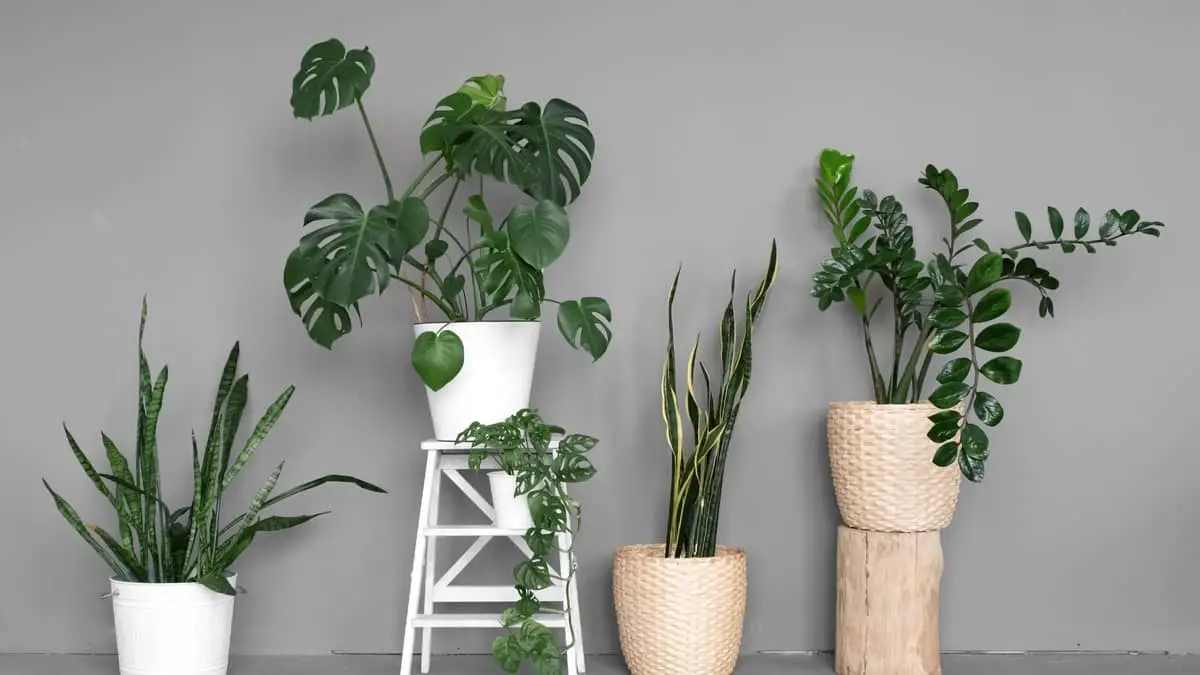Last Updated on August 22, 2022 by Griselda M.
This is the perfect companion plant guide for those of you who need some help growing the perfect snake plant companion plants. Whether you have a small space or a big area, these tips are going to help you get the most out of your garden!
The first thing that we need to look at when it comes to choosing companion plants is where they will be planted. If the space you have to work with is limited then you are going to want to make sure that the plants that you plant together are going to be able to share space.
If you have a snake plant, the right companion plant is a must. There are so many great companions to choose from, and you can find out how to find them in this article. But what are some of the best companion plants for a snake plant?
This article will provide you with the best information on choosing and growing the perfect snake plant companion.
Select The Right Snake Plant Companion Plants For Your Location
A snake plant looks like a small green plant, but in reality, it is a tropical plant that prefers a tropical climate. It’s native to tropical climates in western Africa. If you have a cold climate, you might consider a snake plant to help heat your home.
There are many different kinds of plants that can do this. However, some people think that snake plants look better than other plants. They also smell nice and feel good against your skin. You can find snake plants at nurseries, so you don’t need to buy them online.
Determine Which Snake Plant Companion Plants To Add To Your Garden

Some plants grow well in full sun and others grow better in partial shade. Also, some plants will grow in your backyard in any type of soil, while others prefer moist or dry conditions. If you are going to use more than one type of plant, select those that work well together.
If you like to watch shows about nature, you can look at a nature channel to learn about the characteristics of different types of plants. If you like to read books about gardening, you can find a lot of information about companion plants there. Finally, if you have a local garden center, you may want to ask them which plants work well with your plants. They might be able to give you some good advice.
Determine The Care You Need To Provide To Keep Your Snake Plant Companion Plants Healthy and Happy
There are many things that you need to think about when you are taking care of your indoor plants. If you follow the basic guidelines of caring for plants, you will have a lot of success. The first thing that you need to do is to make sure that the plant gets adequate light.
It is not advisable to put a plant in a dark room. Instead, you should keep it in a well-lit area. The next thing you need to do is to make sure that the soil is always moist. Also, you should not overwater the plant.
A good watering schedule is essential to the health and growth of your indoor plants. Another important factor is temperature. You need to keep the room at the right temperature to make sure that the plant does not get too cold or too hot.
The final thing that you need to do is to make sure that there are no pests or diseases in your plants. This is not easy but you can try to be careful and vigilant to make sure that you don’t have any problems.
Be Sure To Purchase Snake Plants From Reputable Dealers
You’ll want to make sure that you’re buying from a reputable dealer. There are a few things you should look out for when choosing a snake plant vendor. A reputable vendor will have a return policy, so if your plant isn’t living up to your expectations after a few months, they’ll let you exchange or refund your order.
If your plant is delivered promptly and looks healthy, but doesn’t live up to expectations, it may be due to the temperature and/or light levels at its point of origin.
Metal Potted Plant Stand Set of 3
Best Combinations Of Snake Plant Companion Plants
Here are some ideas for combining plants that will create a pleasant, productive environment for your office. As you can see, it’s best to avoid putting plants too close to each other. This is because of the effects of “neighboring syndrome” on plants.
It can cause them to become stressed out and eventually die if they’re not properly positioned. Also, keep your plants off of shelves or near windows. You want to give them enough light without direct sunlight getting in.
Here are some ideas of good snake plant companion plants:
- A succulent combo: Snake plant + fern + ivy = green wall of lushness.
- A great combo: Snake plant + white pachysandra = perfect balance of color and texture.
- A versatile combo: Snake plant + spider plant + begonia = a pretty display of colors.
- A fun combo: Snake plant + purple begonia = a little bit of everything in one.
Conclusion On Snake Plant Companions Plants
To choose the right plants for a snake plant, first, figure out what type of soil the snake plant needs. The soil needs to be a rich mixture of peat, coir, and other organic material. This ensures that the plant’s roots have the proper nutrients and support to thrive.
Next, choose the plants that complement the snake plant. They need to be a group of plants that do not compete with the snake plant for light and water. Plants that are hardy and fast-growing, such as ferns, ivy, and grasses, are good choices for the snake plant’s companion. Finally, plant the snake plant in a location that is bright and indirect sunlight.
We hope that you got the information you needed, for more plant topics and FAQ about the snake plant check out further sections.
Read more about How To Grow Multiple Plants In One Pot?

FAQs
What are snake plant companion plants?
Snake plants are perfect companions for the rest of the garden. They can be grown in containers or as edging, and will grow very close to the ground. Snake plants look great in a shady, moist area. Their deep green leaves and pink-flowered blossoms bring color to a garden bed. They are also very easy to grow. They do need to be pruned every spring to maintain shape.
Can you mix snake plants with other plants?
Yes, but not in all cases. If you plant a snake plant, you’re giving the plant a specific role in your garden, and that role can’t be fulfilled by another type of plant. This means that if you plant a snake plant next to a hosta, the hosta won’t look as good and the snake plant will have a harder time getting enough light. The plant’s specific requirements also mean that a plant that grows well in one area of your yard might not do well in another.
Can you plant pothos and snake plants together?
Pothos and snake plants can be easily grown from seed, but don’t be fooled into thinking they’re easy to grow. Pothos, also known as devil's ivy, is a vining plant with a trailing habit, whereas the snake plant, sometimes called the mother-in-law’s tongue, is a perennial herb that can be propagated by stem cuttings. Both will grow best in full sun and well-drained soil.
Can you plant two snake plants together?
You can! It’s a great way to try out different varieties of succulents, and snake plants are a perfect candidate for the novice gardener. But before you buy your first pair of snake plants, there are some things you should know before trying to create your own perfect nursery. Snake plants are a slow-growing, drought-tolerant variety, so it's best to grow them in a room with indirect lighting, but not in direct sunlight.
Branko is the world‘s most enthusiastic gardener! He is always on the hunt for the perfect flower, bush or tree to add to his ever–growing garden. He is known for his love of all things green, and his passion for nurturing the plants he grows is unmatched. He loves to get his hands dirty and can often be found humbly tending to his garden at all hours of the day. Branko is the go–to guy when it comes to gardening advice – he is always happy to share his knowledge and wisdom with anyone who will listen. He also loves to play pranks on unsuspecting visitors, so beware if you enter his garden!



